Credit: LandSpace Technology
Liftoff Time | December 8, 2023 – 23:39:03.305 UTC December 9, 2023 – 7:39:03.305 BJT |
|---|---|
Mission Name | Honghu-1/2 and Tianyi-33, ZhuQue-2’s Third Flight |
Launch Provider | LandSpace Technology |
Customer | Tianyi Research Institute (Honghu-1, Tianyi-33), Hunan University of Science and Technology (Tianyi-33), and Hongqing Technology (Honghu-2) |
Rocket | ZhuQue-2 (ZQ-2) Y3, also known as Suzaku-2 |
Launch Location | Launch Complex 96 (LC-96) at the Jiuquan Satellite Launch Center (JSLC), in the Gobi Desert, China |
Payload mass | Approximately 150 kg (~330 lb) |
Where did the satellites go? | A Sun-synchronous orbit (SSO) at approximately 450 km (~280 mi) altitude and 97.26 degrees inclination |
Did they attempt to recover the first stage? | No. ZhuQue-2 does not have this capability |
Where did the first stage land? | It crashed on Chinese territory |
Did they be attempt to recover the fairings? | No. ZhuQue-2 does not have this capability |
Were these fairings new? | Yes |
This was be the: | – 3rd mission for the ZhuQue-2 overall – 2nd mission for the ZhuQue-2 in 2023 – 4th mission for LandSpace overall – 2nd mission for LandSpace in 2023 – 201st orbital launch attempt in 2023 |
Where to watch | Unofficial summary video |
What’s All This Mean?
LandSpace Technology successfully performed ZhuQue-2’s third flight, the rocket’s first operational mission. This flight lifted off from Launch Complex 96 (LC-96), at the Jiuquan Satellite Launch Center (JSLC), China. Payloads’ identities on this mission remained unknown at the time of this article’s publishing.
How Did It Go?
LandSpace’s ZhuQue-2 lifted off as expected, with the rocket performing nominally through the different milestones of the flight. After having achieved stage separation, as well as fairing deployment, three payloads were injected into orbit. In this way, the ZQ-2 completed its first operational mission successfully. Together with the consequent report, the firm also disclosed the identities of the passengers. Finally, the launch vehicle’s manufacturer also made an official announcement regarding its coming launcher, the ZhuQue-3. You can read about the payloads and the new rocket below.
Honghu-1/2 and Tinayi-33, or ZhuQue-2’s Third Flight
Due to the tendency of Chinese spaceflight-related entities to share information only after a launch, there was nothing known about this third flight’s passengers prior to its launch. This launcher’s second flight marked the end of the methalox rockets’ race to orbit, with the Chinese launch vehicle finishing first. You can read more about this in our article regarding ZhuQue-2’s second flight. Additionally, you can read our dedicated article about the ZQ-2’s maiden flight, which failed to reach orbit.

Closer to the launch date, the logo of the Chinese company Pop Mart appeared on one side of the vehicle, both on pictures and videos. In similar fashion to ZQ-2’s previous flight, it would seem this particular rocket has a sponsor backing it. Further, rumors had it the methalox launcher was to carry four payloads to orbit, but they ended up being only three. Additionally, photos released by LandSpace showed a satellite with a sign reading “鸿擎科技 HONGQiNG (HONGQiNG Technology)1.”
Honghu-1
The Tianyi Research Institute developed the Honghu-1 satellite, massing at about 50 kg (~110 lbs). Besides carrying electronic integrated payloads, it features different kinds of electric thrusters to carry out tests on orbit:
- Xenon hall thrusters, by the mentioned institute.
- Krypton hall thrusters, by LandSpace’s subsidiary HONGQiNG Technology.
- Xingcheng II argon ion thrusters, by Xingcheng Huiyu Technology.
The aim is to test the Hall-effect thrusters firing them for a cumulative time of 3,000 hours. During that period a total of about 10,000 cycles, switching the thrusters on and off, should be completed. On the other hand, the argon-based ones feature a specific impulse (a measurement of their efficiency) of 1,500 seconds. Additionally, their design should achieve high-reliability and cost-effectiveness. In general, using them, the satellite will maneuver along hundreds of kilometers.
Honghu-2
Information about the Honghu-2 remains scarce, but Chinese journalist Wu Lei reported on X that it “is an experimental satellite for low-orbit satellite constellation network, developed by Hongqing Tech.” LandSpace published the photo of this spacecraft prior to launch.
Tianyi-33
In a joint effort, the Tianyi Research Institute together with the Hunan University of Science and Technology developed Tianyi-33. With a mass of 50 kg (~110 lbs), its structure makes use of composite materials which increase radiation protection. This satellite features a remote sensing camera, as well as multiple new technology payloads. The Tianyi Institute implemented a number of in-house devised innovations, in order to allow for better thermal management, and more efficient power consumption.
Another payload developed by Beijing University of Posts and Telecommunications enables the satellite to do research. In particular, it grants the spacecraft capabilities such as: measuring time delays between satellites, streaming videos, providing web chat services, and conducting pseudo-SSH experiments.
LandSpace
北京蓝箭空间科技有限公司, or Lanjian Kongjian Keji YG, “Blue Arrow Space Tech Co.”, is also known as LandSpace Technology in English. Headquartered in Beijing, it claims to be the first Chinese private company with full access qualifications, as well as the first to launch a fully private rocket: the ZhuQue-1 — a three-staged small-lift solid propelled launch vehicle. In spite of launching it only once, and unsuccessfully so, in a bold move the company decided to focus on the ZhuQue-2 — a remarkably different launcher. Unfortunately, ZQ-2’s maiden flight suffered a similar fate, but LandSpace remained committed to retrying and to aim at full reusability in the future, as stated on their website.
Not only does this company develop and manufacture rockets and engines, but it also provides launch services. In order to do so, it has a series of facilities, besides its headquarters. One of them is its rocket assembly plant located in Jiaxing, while one in Huzhou is dedicated to engine manufacturing. In addition to these, other research and development centers, test centers, and even facilities at Jiuquan contribute to their activities.
ZhuQue-3 Announcement
The company presented the partially reusable ZhuQue-3, stating its aim to launch during 2025. Its carrying capacity should be up to 21,300 kg (~47,000 lbs) in its expendable configuration, with 18,300 kg (~40,000 lbs) available in its reusable configuration. The rocket’s height is 76.6 m (~250 ft) with a 4.5 m (~15 ft) diameter for the first stage, while the fairing diameter is slightly larger at 5.2 m (~17 ft).
ZQ-3 will feature nine methalox-fed Tianque-12B engines on the first stage, each of them generating 1,000 kN (~225,000 lbf) of thrust at sea level. On the second stage, a single Tianque-15B will burn the same propellants to produce 1,183 kN (~266,000 lbf) in a vacuum, featuring a specific impulse of about 357 s. Also, this stage will showcase a common dome delimiting tanks.
As it could be seen in a promotional video, the rocket steers itself using four deployable grid fins for the descent. Afterward, the ZhuQue-3 lands on four legs, deployable as well. This, together with a three-engine reentry burn, and a one-engine landing burn, clearly shows a rocket design heavily inspired by SpaceX’s Falcon 9.
What Is The ZhuQue-2?
Considered the biggest Chinese private rocket, the ZhuQue-2 is also the first to run on liquid propellants, and specifically on methalox — always speaking of the Chinese private sector. Moreover, the ZQ-2 is the first rocket running on those propellants to reach orbit. It is a two-stage, expendable medium-lift launch vehicle similar to the Long March 2C. From different images, the rocket certainly looks to be built in metal, with its skin being both structure and tank.
Further, 朱雀, ZhuQue, means Vermilion Bird, and is one of four Chinese mythological beasts. These are represented in their own constellations. Together with the other three, it is considered a guardian of the cardinal point, the south, and associated with the element of fire. In Japanese, Suzaku is the name of this same bird.
| Height [m (ft)] | 49.5 (~162) |
| Diameter [m (ft)] | 3.35 (~11) |
| Fairing diameter [m (ft)] | 3.35 (~11) |
| Liftoff mass [kg (lb)] | 219,000 (~486,000) |
| Liftoff thrust [kN (lbf)] | 2,628 (~591,000) |
| Mass to LEO* [kg (lb)] | 6,000 (~13,300) |
| Mass to SSO** [kg (lb)] | 4,000 (~8,900) |
** 500 km (~310 mi)
First stage
It houses a Tianque-13 engine, which is another designation for a set of four gimballing Tianque-12 engines bundled together. LandSpace developed it in-house, making it run on the gas-generator cycle. Its name means magpie.
| Height [m (ft)] | 3.6 (~12) |
| Outlet diameter [m (ft)] | 1.5 (~5) |
| Expansion ratio [-] | 40:1 |
| Thrust* [kN (lbf)] | 784 (~176,000) |
| Specific impulse* [s] | 350 |
LandSpace is already developing the TQ-12A, featuring 100 kg (~220 lb) less in mass, 9 % increased thrust, and a higher specific impulse by 4 s.
Second stage
On this stage, the power plant consists of a vacuum-adapted TQ-12, as well as a four-chambered TQ-11 for attitude control. Moreover, the latter also provides the last ~2 km/s (~1.25 mi/s) the stage needs to reach orbital velocity. However, this configuration will change in the future — though it was supposed to make its debut with Y3. Specifically, a gimballing TQ-15A will replace the vacuum TQ-12, and the vernier engine TQ-11 will be removed.
With a thrust of 836 kN (~188,000 lbf) in a vacuum, the Tianque-15A will throttle from 60 % to 110 %, and present gimbal capability of ±4 degrees. Together with this engine, the Yunque-10 (YQ-10) attitude control system will provide both that and roll control.
- We thank SiRay for their kind observation regarding the Chinese inscription on the mentioned sign. ↩︎





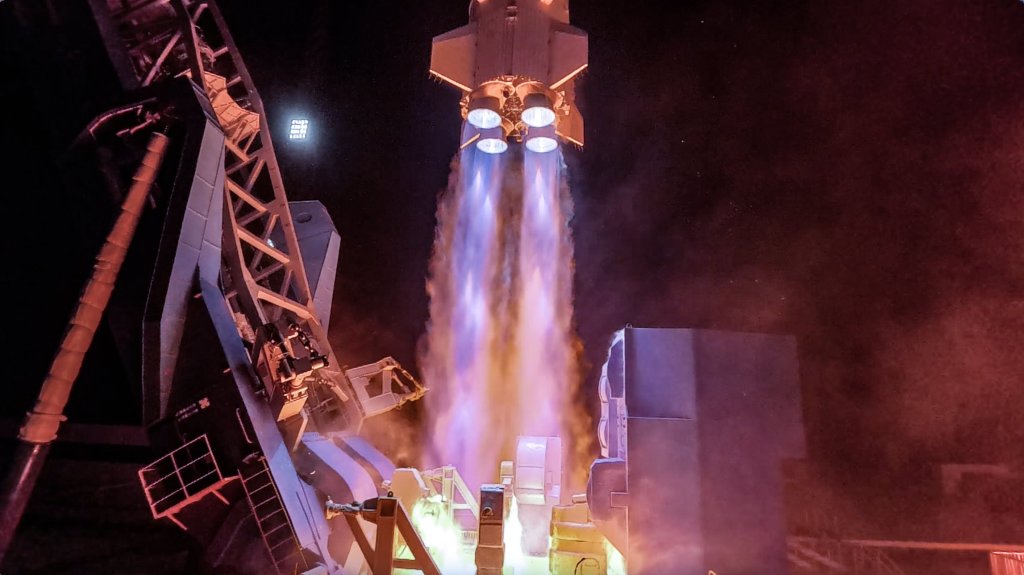




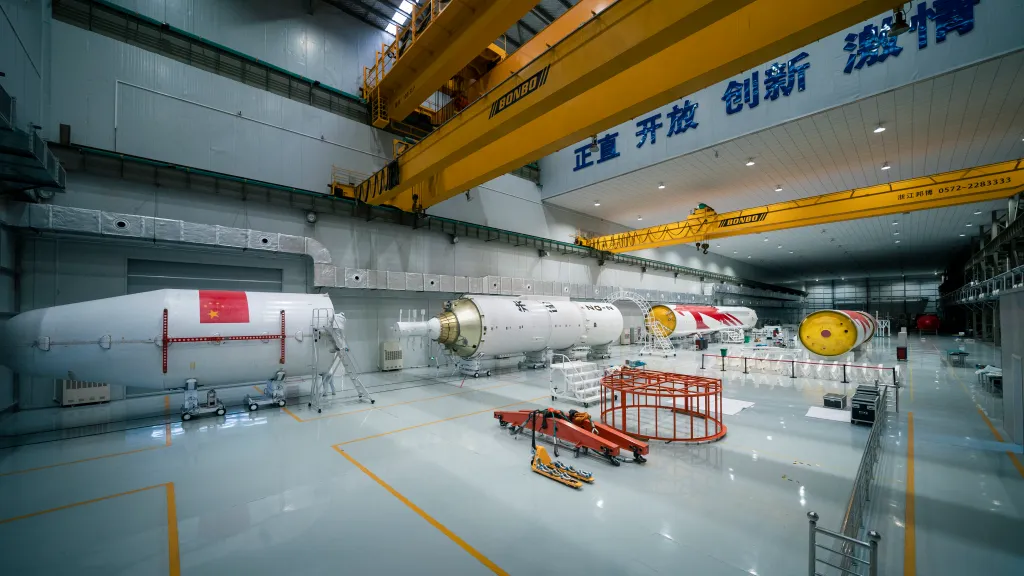
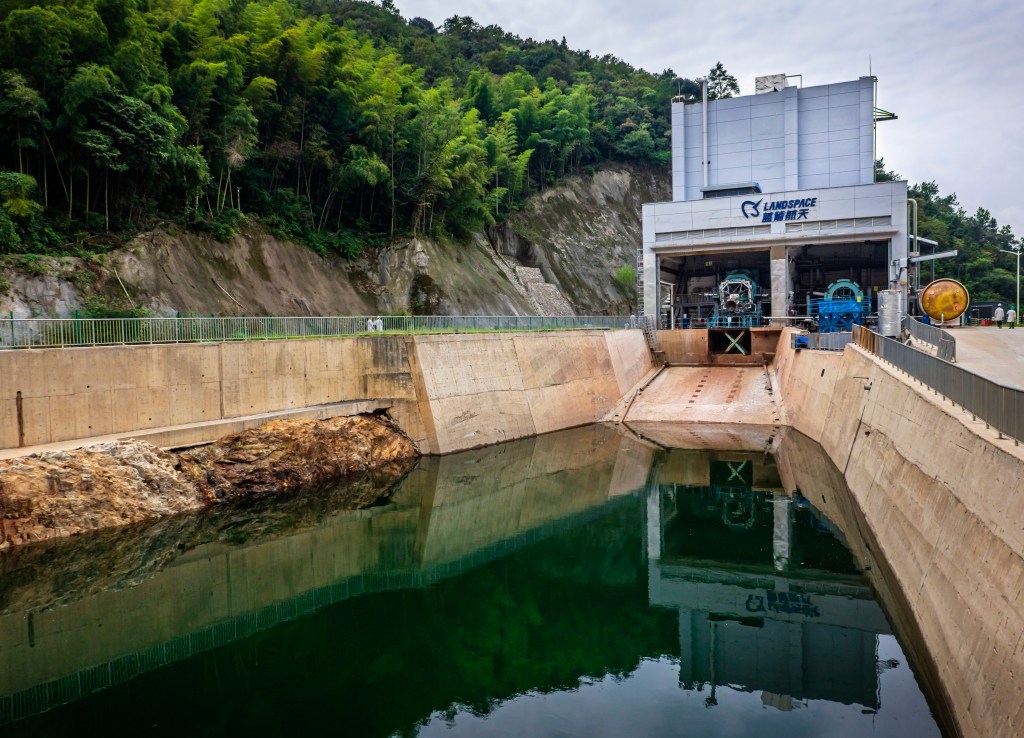


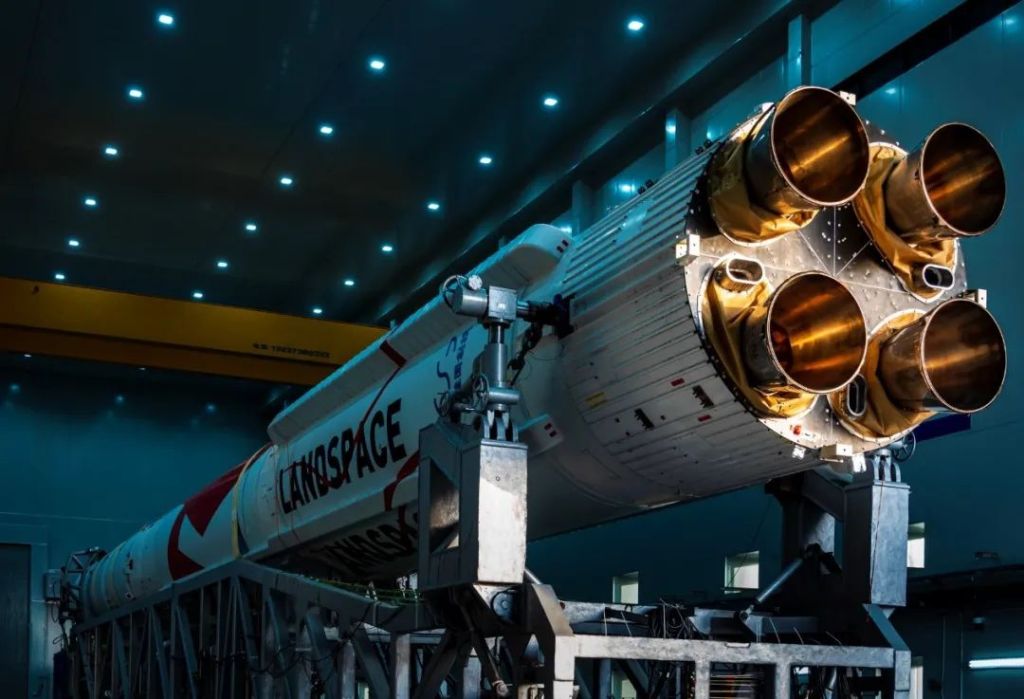
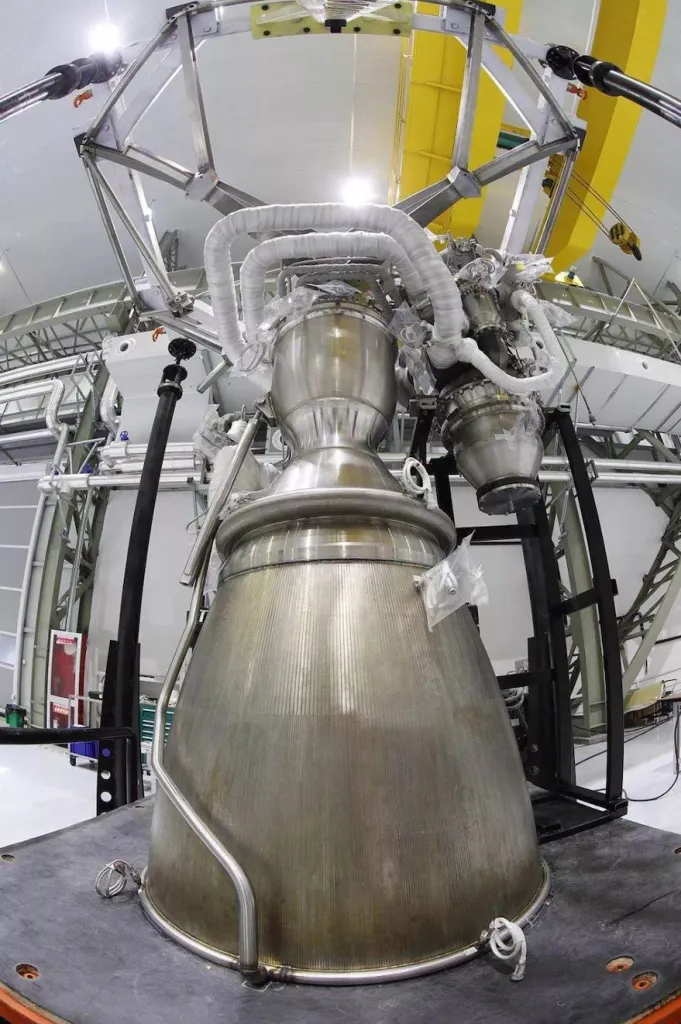
OMG!! Indian Aerospace Startups are so much behind Chinese Counterparts…!
actually the payload is not 服藥科技 but鸿擎科技,a Blue Arrow’s subsidiary with capability to develop Hall thrusters
You are right, and I’ve made changes to reflect this correction! Thank you!
Great and timely correction! I’m from China so I can understand chinese lol.
I don’t speak any Chinese language, though I’d love to. However, I will pay even closer attention to hanzis, so there’s less of a chance I make a mistake like that again. And thank you once more! =)
“Further, 英語, ZhuQue, means Vermilion Bird, and is one of four Chinese mythological beasts” under “What Is The ZhuQue-2?” has incorrect Chinese. Right now it says Yingyu which means English. Presumably you want 朱雀.
Indeed. I really, really appreciate you letting me know! I’ve made the change!